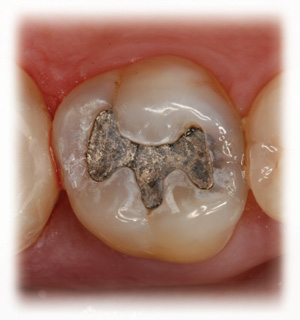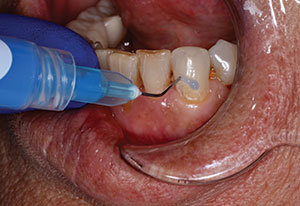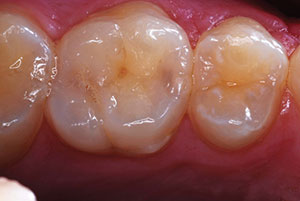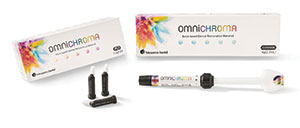The question posed in the title of this article has been debated for more than 40 years. In 1968, the product Adaptic, then sold by J&J, was promoted as a replacement for amalgam. During the following 40 years, the polarized debate has constantly raged, and, in spite of leadership organizations supporting amalgam use, the controversy continues.
BACKGROUND: IS AMALGAM SAFE?
World health organizations have consistently supported the use of amalgam. In an official publication, the FDI World Dental Federation stated: “While much research has been devoted to the development of restorative materials, there is currently no direct filling material that has the wide indications, ease of handling and good physical properties of dental amalgam. The restorative materials currently available as alternatives to dental amalgam significantly increase the cost of dental care.”1
The Council of European Dentists stated: “Research over many decades has failed to show any significant health risk posed by dental amalgam,” and “Restrictions on the use of amalgam would damage the financial stability of health systems as well as impact on individual patients’ ability to afford dental care.”2
The ADA has stated: “Dental amalgam (silver filling) is considered a safe, affordable and durable material that has been used to restore the teeth of more than 100 million Americans. It contains a mixture of metals such as silver, copper and tin, in addition to mercury, which binds these components into a hard, stable and safe substance. Dental amalgam has been studied and reviewed extensively, and has established a record of safety and effectiveness.” The ADA’s Council on Scientific Affairs’ 1998 report3 on its review of the scientific literature on amalgam states: “The Council concludes that, based on available scientific information, amalgam continues to be a safe and effective restorative material.” The Council’s report3 also states, “There currently appears to be no justification for discontinuing the use of dental amalgam.” The ADA further states, “While questions have arisen about the safety of dental amalgam relating to its mercury content, the major US and international scientific and health bodies, including the National Institutes of Health, the US Public Health Service, the  Centers for Disease Control and Prevention, the Food and Drug Administration, and the World Health Organization, among others have been satisfied that dental amalgam is a safe, reliable, and effective restorative material.”4
Centers for Disease Control and Prevention, the Food and Drug Administration, and the World Health Organization, among others have been satisfied that dental amalgam is a safe, reliable, and effective restorative material.”4
Is amalgam still in use by the majority of practitioners? In our various speaking events around the world, we have found that amalgam use in some countries is minimal, while in other countries, it is used routinely. In a survey a few years ago conducted by Clinical Research Associates, 73% of mainly North American respondents stated that they used amalgam.5 Undoubtedly, it is lower today. The differences in amalgam use among countries appear to be related to economics, dental education, and aesthetic orientation of the residents.
In this article, we will discuss the locations and situations in which amalgam is still used in many practices, express our opinions on why amalgam is still used, and discuss our conclusions on when and where resin-based composite use is appropriate.
WHERE AND WHEN PRACTITIONERS STILL FAVOR AMALGAM
Some practitioners strongly favor amalgam use in specific situations, and some find they cannot treat certain situations without amalgam. In our many encounters with practicing dentists, the following sentiments have been shared with us when we have expressed positive comments about resin-based composite use in posterior teeth.
COMPOSITE RESIN USE IN POSTERIOR TEETH: CURRENT AND FUTURE
The following are our personal observations related to the current use of resin-based composite and amalgam as posterior tooth restorative materials in North America and the future of their use.
• There are many practitioners who do not use any amalgam in their practices, and the trend is growing. As prosthodontists, dealing primarily with complicated and difficult cases, we see almost no cases where amalgam is highly indicated over other materials, assuming practitioners have competency in placing resin-based composite and/or the patient can afford onlays or crowns.
• Amalgam has served the profession and the people we treat with admirable functional acceptability, but clearly with lack of aesthetic acceptability. We predict that amalgam will continue to be used for several decades in the situations we have discussed, but that it will die an aesthetic death over the coming years.
• Patients do not want “black/ grey” teeth! When offered a choice, few patients choose amalgam over tooth-colored restorations. I have long suggested that the fees for amalgam and resin-based composite should be equal to eliminate patients choosing one restorative type over another on the basis of fees.
•l Every patient should be provided with information about all of the treatment types available. The necessity for so-called “informed consent” before starting treatment is evident. Placing unaesthetic amalgam restorations without informing the patient of the available tooth-colored materials is not appropriate, and could lead to legal activity on the basis of “lack of informed consent.”9
• Although controversial and undoubtedly related to clinician skill and experience, resin-based composite has served well in posterior teeth with small to moderate sized lesions, with isthmus cuts up to one third to one half of the cusp-tip to cusp-tip distance.10-19 When tooth structure removal is in excess of that described, other types of restorations are indicated, assuming finances allow the more expensive restorations.
• Dentists primarily educated/ trained in school to place amalgams find placement of resin-based composite to be difficult, while dentists trained/educated primarily to do resin-based composite find amalgam difficult to place.
SUMMARY
The major health organizations in the world continue to accept amalgam use, but the “amalgam war” of the 1800s is still going on. The end is not in sight. There is little disagreement that amalgam serves well and, although controversial, it appears to have minimal to no health hazards.
There is a wide variation in the relative amount of amalgam placed in developed countries, and many dentists in North America do not use it. However, amalgam is still being used at least some of the time by the majority of practitioners in North America, and most of those practitioners also place resin-based composite in Class II locations.
The evolution from amalgam to tooth-colored restorations has been a slow and tumultuous journey. The acceptability of resin-based composite in Class II locations continues to be a question for some dentists, while others have concluded that amalgam is “dead.” It would be highly desirable if some of dentists using the alleged poisonous properties of amalgam as a “practice building” ploy would find more legitimate methods to increase their practice activity.
References
- FDI World Dental Federation. WHO consensus statement on dental amalgam. Seoul, Korea: September 1997. fdiworldental.org/federation/ assets/statements/ENGLISH/Amalgam/Dental_Amalgam.pdf. Accessed November 21, 2009.
- Council of European Dentists. CED resolution on amalgam. May 2007. eudental.eu/index.php ?ID=2741. Accessed November 21, 2009.
- American Dental Association. ADA Council on Scientific Affairs statement on dental amalgam. Revised August 2009. ada.org/prof/resources/ positions/statements/amalgam.asp. Accessed November 21, 2009.
- Dental Filling Options. Oral Health Topics A to Z. American Dental Association Web site. ada.org/public/topics/fillings.asp#amalgam. Accessed November 21, 2009.
- Clinical Research Associates. CRA Newsletter Clinicians’ Preferences 2001#15, CRA Newsletter. 2001;25(12):3.
- Christensen GJ. Remaining challenges with Class II resin-based composite restorations. J Am Dent Assoc. 2007;138:1487-1489.
- Baratieri LN, Ritter AV. Four-year clinical evaluation of posterior resin-based composite restorations placed using the total-etch technique. J Esthet Restor Dent. 2001;13:50-57.
- Dilley DC, Vann WF Jr, Oldenburg TR, et al. Time required for placement of composite versus amalgam restorations. ASDC J Dent Child. 1990;57:177-183.
- Dlugokinski M, Browning WD. Informed consent: direct posterior composite versus amalgam. J Am Coll Dent. 2001;68:31-40.
- Bernardo M, Luis H, Martin MD, et al. Survival and reasons for failure of amalgam versus composite posterior restorations placed in a randomized clinical trial. J Am Dent Assoc. 2007;138:775-783.
- Wahl MJ, Schmitt MM, Overton DA, et al. Prevalence of cusp fractures in teeth restored with amalgam and with resin-based composite. J Am Dent Assoc. 2004;135:1127-1132.
- Soncini JA, Maserejian NN, Trachtenberg F, et al. The longevity of amalgam versus compomer/composite restorations in posterior primary and permanent teeth: findings from the New England Children’s Amalgam Trial. J Am Dent Assoc. 2007;138:763-772.
- Mjör IA, Jokstad A. Five-year study of Class II restorations in permanent teeth using amalgam, glass polyalkenoate (ionomer) cement and resin-based composite materials. J Dent. 1993;21:338-343.
- Türkün LS, Aktener BO, Ateş M. Clinical evaluation of different posterior resin composite materials: a 7-year report. Quintessence Int. 2003;34:418-426.
- Hu X, Marquis PM, Shortall AC. Two-body in vitro wear study of some current dental composites and amalgams. J Prosthet Dent. 1999;82:214-220.
- Meier C, Lutz F. Composites versus amalgam: comparative measurements of abrasion resistance in vivo: 1-year results [in German]. SSO Schweiz Monatsschr Zahnheilkd. 1979;89:203-212.
- Koczarski MJ, Corredor AC. Direct posterior composite restorations: simplified success through a systematic approach. Pract Proced Aesthet Dent. 2002;14:87-94.
- Ersin NK, Candan U, Aykut A, et al. A clinical evaluation of resin-based composite and glass ionomer cement restorations placed in primary teeth using the ART approach: results at 24 months. J Am Dent Assoc. 2006;137:1529-1536.
- Burke FJ, Shortall AC. Successful restoration of load-bearing cavities in posterior teeth with direct-replacement resin-based composite. Dent Update. 2001;28:388-394,396,398.
Dr. Christensen is currently a practicing prosthodontist in Provo, Utah. His degrees include DDS, University of Southern California; MSD, University of Washington; and PhD, University of Denver. He is a Diplomate of the American Board of Prosthodontics, a Fellow and Diplomate in the International Congress of Oral Implantologists, a Fellow in the Academy of Osseointegration, American College of Dentists, International College of Dentists, American College of Prosthodonists, Academy of General Dentistry (Hon), Royal College of Surgeons of England, and an Associate Fellow in the American Academy of Implant Dentistry. Drs. Gordon and Rella Christensen are co-founders of the nonprofit Gordon J. Christensen CLINICIANS REPORT (previously CRA). He has presented more than 45,000 hours of continuing education throughout the world and has published many articles and books. He can be reached at (801) 226-6569 or via e-mail at info@pccdental.com.
Disclosure: Dr. Christensen reports no conflicts of interest.
Dr. Child is the CEO of CR Foundation, a nonprofit educational and research institute (formerly CRA). He conducts extensive research in all areas of dentistry and directs the publication of the Gordon J. Christensen CLINICIANS REPORT, and their other publications. Dr. Child graduated from Case Western Reserve University School of Dentistry, completed a prosthodontic residency at LSU, and maintains a private practice at the CR Dental Health Clinic in Provo, Utah. He is also a Certified Dental Technician through National Board of Certification in Dental Lab Technology. Dr. Child lectures nationally and co-presents the “Dentistry Update” course with Drs. Gordon and Rella Christensen. He lectures on all areas of dentistry, with an emphasis on new and emerging technologies. He maintains membership in many professional associations and academies. He can be reached at (801) 226-2121 or via e-mail at toni@cliniciansreport.org.
Disclosure: Dr. Child reports no conflicts of interest.











